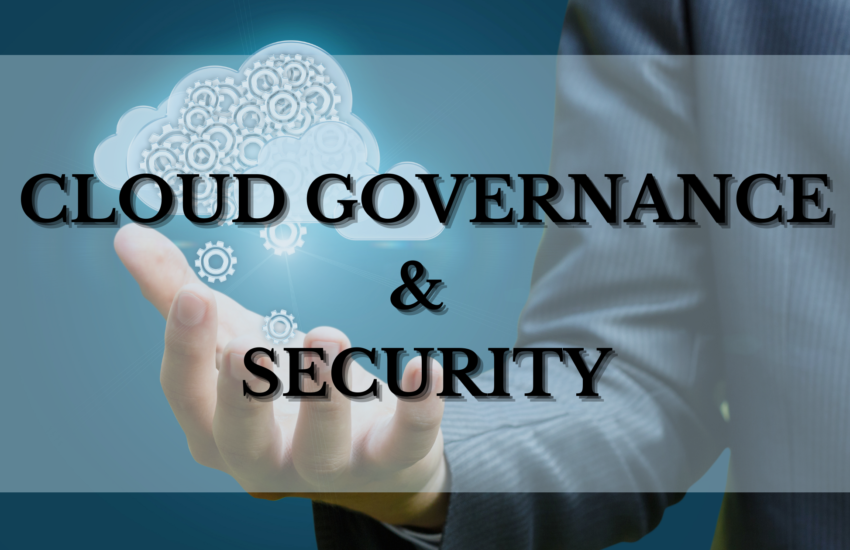“Data is the new oil.” Being such a huge resource, it is important to protect it and also to keep it accessible, confidential and well-maintained. One such method of ensuring this is to maintain the data on the cloud. So, this shall be an appropriate time to ask ourselves how much are we aware of this new and emerging technique of maintaining data.
The ‘cloud’ refers to servers that can be accessed through the internet and includes vast databases and software. This means that companies and users are not required to maintain applications on their own devices to store the data. Instead, they are located at data centres spread across the world. This also implies that the data stored on the cloud can be accessed anywhere, anytime as its location is virtual. This brings us to the indispensable requirement of good cloud governance and security.
There have been set vast rules and policies by companies providing such services. The main objective is data security, risk management, and smooth cloud system operations. There are five major disciplines of cloud Governance:
- Cost Management– It is a primary concern for cloud users. Development of policies for cost control for all cloud platforms.
- Security Baseline– Once security requirements are established, cloud governance policies and enforcement apply those requirements across network, data and asset configurations.
- Identity Baseline– Improper application of identity requirements increases the risk of breach. The Identity Baseline discipline ensures that the identity is consistently applied across cloud adoption efforts.
- Resource Consistency– Cloud operations depend on consistent resource configuration. Through governance tooling, the resource can be configured consistently to manage risk related to onboarding, drift, discoverability and recovery.
- Deployment Acceleration– Centralisation, standardisation and consistency in approaches to deployment and configuration improve governance practices. When provided through cloud-based governance tooling, they create a cloud factor that can accelerate deployment activities.
Creation of Rules of Cloud Governance:
The best way of creating rules for cloud governance is by knowing the assets already deployed and the security threats already existing. The company should begin by optimizing its assets for cost and performance followed by future capacity planning and budgeting. This involves exchanging one’s service providers for taking the advantage of discounted pricing structures or more suitable services but is something you should be able to manage easily with a suitable service, but easily manageable cloud management solution.
Once the assets are optimised, the company is armed with reports evaluating costs and performance by department, allowing collaboration with different departments to create the rules of governance. Along with putting place rules of cloud governance, accommodation of flexibility & revisions and policies to govern the security of their network.
Cloud Governance Automation Software:
Cloud governance automation software is a useful element of some third-party cloud management solutions that executes predetermined actions when a governance rule is violated.
Cloud governance solutions sure help audit and optimise assets, and monitor compliance with the applied governance rules, CGAS can be configured to notify the authorities of a violation request approval for an event beyond the parameters of your governance rules, or automatically terminate an asset.
Effectively, cloud governance automation software:
- Removes much of the work involved in cloud governance
- Helps create a more cost-effective and efficient environment
- Alerts to potential security issues before they develop into serious concerns.
Cloud Security:
Cloud security refers to technologies, policies, controls and services that protect cloud data, applications and infrastructure from threats.
Cloud security is a shared responsibility between the cloud service provider and the customer. This shared responsibility model includes three categories of responsibilities:
- Responsibilities of the service provider
- Responsibilities of customer
- Responsibilities vary depending on the service model.
The service provider’s responsibilities are related to the safeguarding of the infrastructure as well as access to patching and configuration of the physical hosts and network on which the ‘Compute Instances’ run and the storage and other resources reside.
The customers’ responsibilities include managing users and their access privileges, safeguarding cloud accounts from unauthorised access, encrypting and protecting cloud-based data assets and managing its security posture.
Hence, whether an individual user, SMB user or even enterprise-level cloud user, it is important to make sure that their network and devices are as secure as possible. This starts with good cyber security understanding on the individual user level, as well as ensuring that your network and all devices are protected using a robust security solution that is built for the cloud.
Conclusion:
It is certainly worth investigating regardless of what size of operation you run in the cloud now, you should know what cloud governance is.

